Death to Ski Resorts? - The Declining Popularity of Skiing
2024 Annual Ski Industry Report by MySkiLessons.com
Skiing is a popular winter sport that has captured the hearts of millions. The thrill of the snow excites people all over the globe. Skiing is not just a sport. The activity unites families. Ski resorts are a multibillion dollar industry.
A gradual decline of visitors since 2004 to ski areas threatens thousands of jobs and companies in the industry. More than 45 ski resorts have closed their mountains in the last 20 years.
Ski resorts and manufacturers are doomed to fail unless interest in the sport is revived. The industry must be aware of the reasons for the falling popularity of skiing in order to survive.
Let’s explore a few of those reasons..

Skiing Has Been a Big Business Since 1908
Sking is not a fad. The sport is also not new. The concept of skiing has been around since 8000 B.C. in Northern China.
The first ski lift was developed in 1908. Some ski area operators went bankrupt due to popularity spikes. Other mountains closed their doors due to weather. Modern day ski area operators have largely adapted to unpredictable weather conditions adding snow-creating machinery.
The invent of snowmaking has expanded seasons. A season without snow previously forced ski areas to open in February or later. Mother nature was in charge of the business. It became a disaster to support and maintain workers. Snowmaking helped keep mountains stay continously open and brought reliable seasons.
However, reliable snowmaking will not save an industry dying from a popularity crisis.
First, it can be proven that interest in skiing has dropped significantly.
Interest in Skiing Has Fallen More Than 70%
Google searches for “skiing” have been ebbing since 2004. The total loss of search volume is more than 70%.
(The annual search volume increase waves happen each year. The interest typically starts in November and lasts through April.)
Searches for Ski Areas Has Fallen 65%
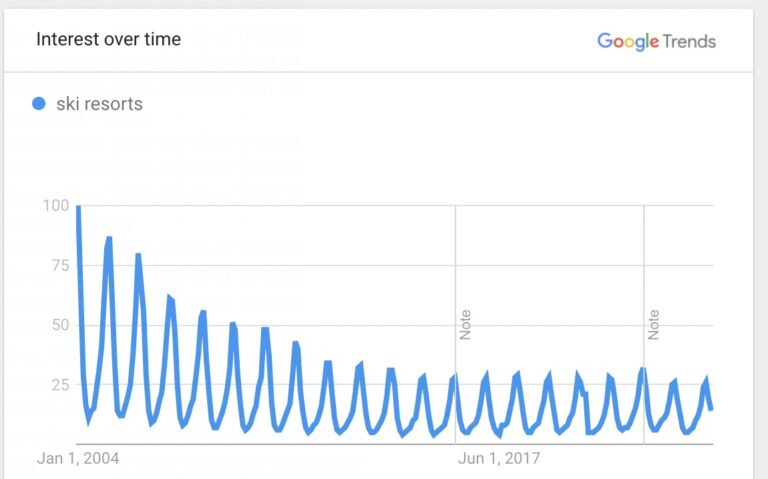
source: Google Trends, 2024
To avoid skewing the data, the above graph takes into consideration the overall shift and realignment to include the name “resort” in business names. “Ski area” was once a popular reference. The data above is only using the modern terminology, “Ski Resort.”
69% Decrease in Searches for “Skis” Since 2004
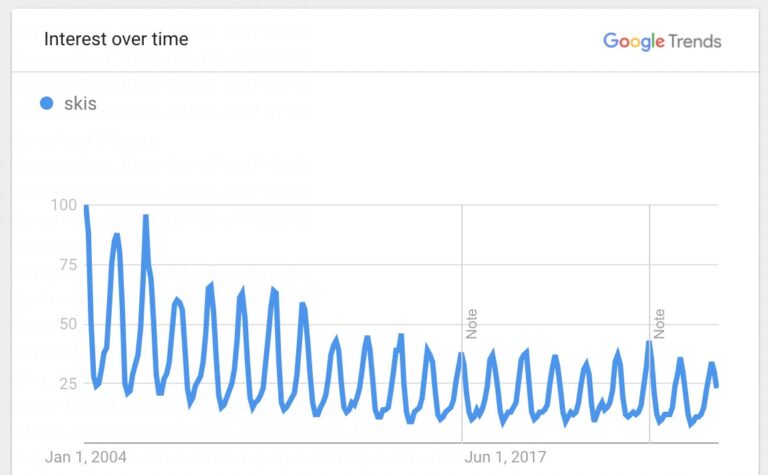
source: Google Trends, 2024
Interest in Snowboarding Has Fallen 82%

source: Google Trends, 2024
Snowboarding has always trailed skiing in popularity, but has also shown signs of weakness.
Reasons---Some May Blame Weather or Lack of Natural Snow?
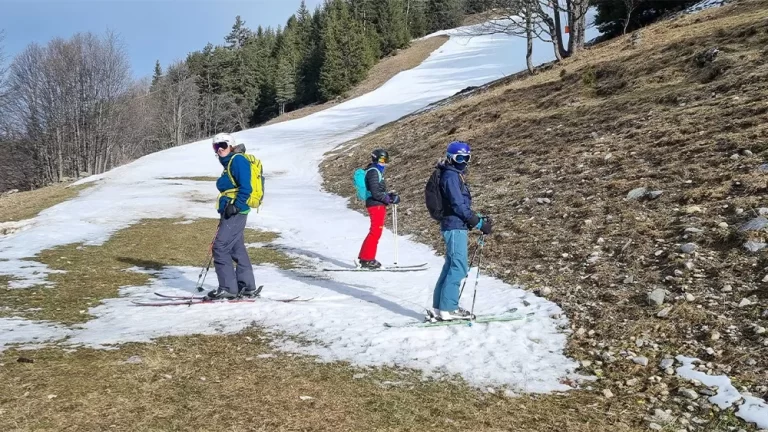
Resorts and organizations, like Protect Our Winters, have lobbied congress with concern about loss of skiers and snowboarders due to climate change or global warming’s impact on increased temperatures. Over $250 million has been spent by lobbyists trying to introduce new legislation to decrease climate change.
Natural snowfall made a huge difference 80 years ago. Modern-day snowmaking has nearly completely ended that threat.
Resorts like Vail may have a hard time snowmaking in the glades of the back bowls. Certainly, die-hard skiers opt for the steep and extreme slopes, places where snowmaking is hard to install.
However, looking at trends of interest on Google for skiing and snowboarding searches, the industry is declining regardless of snowfall.
Snowpack Has Decreased Only 2-3% in 80+ Years
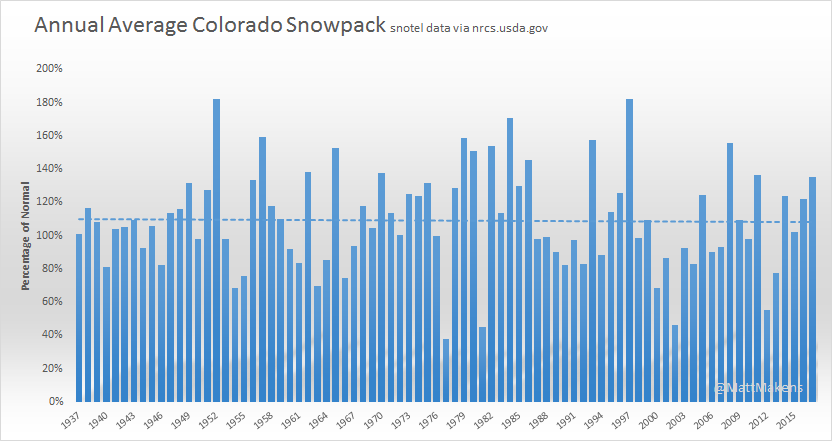
Since 1937, the average snowpack in Colorado has hardly reduced. Depending on the time frame selected, it may be possible to correlate an average 2-3% drop in snowpack.
Temperature Has Increased .5-1 Degree Celcius

Since record-keeping, about a 1 degree celsius increase has been recorded. (About 2 degrees in Fahrenheit)
As displayed, it may have had a 2%-3% impact on snowfall.
Would a 2-degree increase in temperature cause a lack of interest in skiing?
Hardly.
Reduced Interest in Extreme Sports Across The Board
Annual Searches for Skateboarding Since 2004.
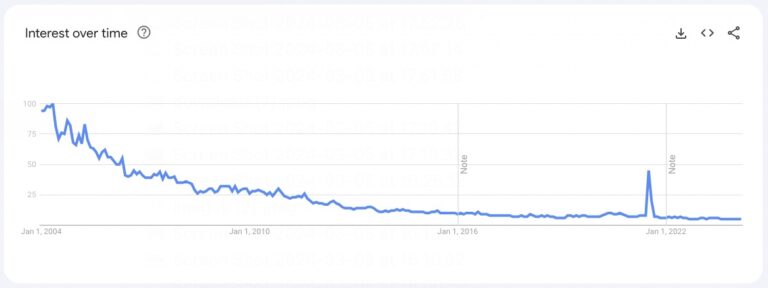
Skateboarding has also fell dramatically since 2004.
If temperature and snow increased, shouldn’t more people be skating?
Annual Searches for Surfing Since 2004.
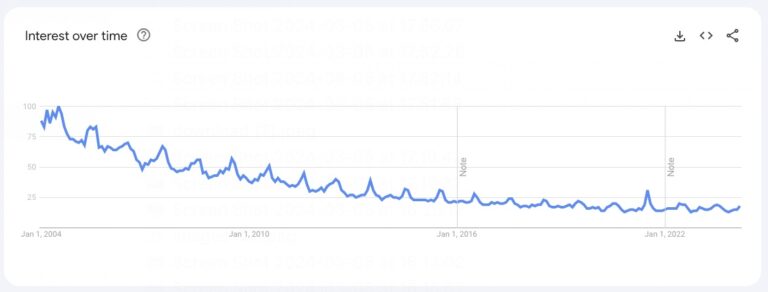
Certainly rising temperatures should bring more people to the beach?
No.
Surfing interest is also down.
45 Ski Resorts Went Out Of Business in the Past 20 Years
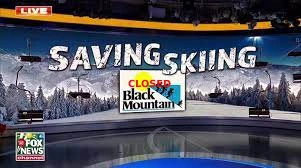
Last winter, FOX News and other media networks ran specials on closing ski resorts. Most notably, larger resorts such as Black Mountain in New Hampshire, a resort that opened in 1935.
According to NSAA, The National Ski Area’s Association report, in the last 20 years, 45 resorts have closed their doors for good.
List of some North American resorts that when out of business:
-Ascutney Mountain Resort, Vermont, 2010.
-Black Mountain, New Hampshire, 2023.
-Blue Marsh Ski Resort, Pennsylvania, 2005.
-Brodie, Largest closed ski area in Berkshires, 2002.
-Berthoud Pass Ski Area, Colorado.
-Cuchara Mountain Resort, Colorado
-Hidden Valley, Colorado
-Kratka Ridge, California, 2002.
-White Grass, West Virginia
-Marshall Mountain, Montana, 2002.
-Ski Blandford, Massachusetts, 2019.
-Ski Mont Alta, Quebec, 2014.
-Ski Shefford, Quebec, Canada, 2006.
-Woodbury Ski Area, Connecticut, 2016.
Notable mentions : Turner Resort in Montana closed midseason in February of 2024, remarking that it is a temporary close.
Teton Pass Ski Area closed in the 2023/24 season after only 4 days.
Resorts are not only closing in America.
After 60 years of operation, French resort La Sambuy closed it’s lifts.
Interestingly, La Sambuy blames the climate. “Between the 1960s and today, the climate has changed a lot. Now, there is less snow in the winter. This year, we opened for only four weeks, that’s it. The season is getting shorter and shorter, and obviously, it is not going to get any better.” – La Sambuy Management
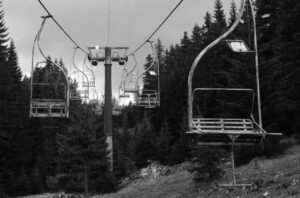
It’s estimated that there are 3,000 abandoned ski lifts in France.
List of Closed European Ski Areas:
-Super Saint Bernard ski resort in Switzerland closed in 2010
-Alpe Bianca resort in Piedmont Italy closed in 1995
-Alpe Colombino Ski Resort closed in 1994
-Col de l’Arzelier in France in 2019
People Have Withdrawn From Extreme Sports
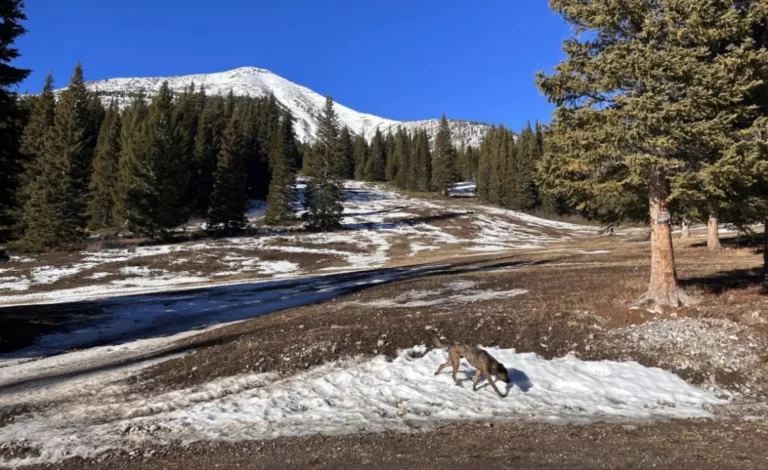
Potential Reasons
Increased medical expenses. Total medical expenses for Americans increased from roughly $2 trillion in 2005 to $4.5 trillion today. Families are surely feeling the pressure of the expenses. This has led many to reconsider engaging in “risky” activities.
Fear of Injury. More people are switching to sports with a reduced risk of injury. A perfect example is the boom of the kick-scooter industry since 2004. Scooter enthusiasts have replaced skateboarders at many skate parks.
Cost Constraints Lift ticket and resort prices have shot up astronomically since 2004. Public companies, like Vail, have swallowed up more and more local ski resorts. Meanwhile, the average man has been caught in the middle of a pricing squeeze.
The price of ski equipment is also not exactly cheap.
Lack of Skill. There is a high barrier to entry. As American resorts have partnered with USFS (United States Forest Service) to limit competition from other ski schools at their resorts, the price of ski schools has shot up, limiting access to ski schools.
Signs of Resilience:
Ski Areas are also opening up after closing or bankruptcy. Examples of this are: Saddleback Mountain in Maine, which opened in 2022, after being closed for more than 10 years.
In 2021-2022, the US industry recorded a record number. of visitors after years of instability,
Where Does the Ski Industry go From Here?
Resorts need to broaden their appeal by offering a range of activities beyond skiing and snowboarding, such as snowshoeing, tubing, which attract the low risk, and lower chance of injury. Such a strategy mitigates the impact of declining interest in traditional snow sports.
Technology integration: Implementing innovative technologies, such as AI for setting lift ticket prices and artificial snowmaking systems and advanced grooming equipment, helps resorts maintain optimal skiing conditions even in unpredictable weather patterns. Additionally, the integration of digital platforms for booking, ticketing, and guest services enhances the overall customer experience.
Resorts can win back skiiers by recognizing the importance of addressing rising medical costs. Ski areas can prioritize safety measures and invest in comprehensive risk management programs.
This includes improved slope maintenance, and increased medical facilities on-site to minimize accidents and injuries.
The industry needs to do collaborative marketing campaigns, targeted advertising, and partnerships with travel agencies are utilized to rekindle interest in skiing and snowboarding among both existing and new demographics. Emphasizing the unique experiences and natural beauty of mountain destinations helps attract visitors and rebuild the industry’s reputation.
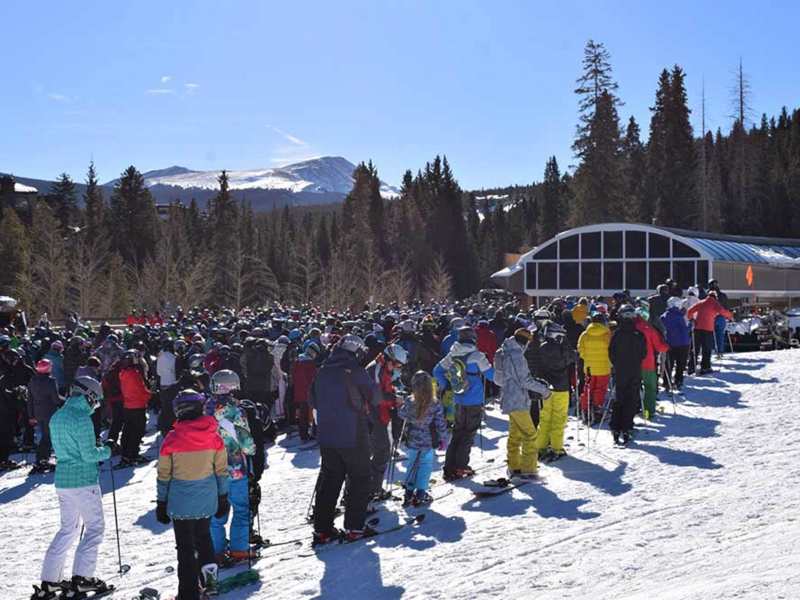
Can Skiing Return to It’s Former Glory?
Of course, it can.
By implementing these strategies, the ski and snowboard industry successfully navigates its challenges, revitalizing interest, and ultimately make the industry thriving once again.
